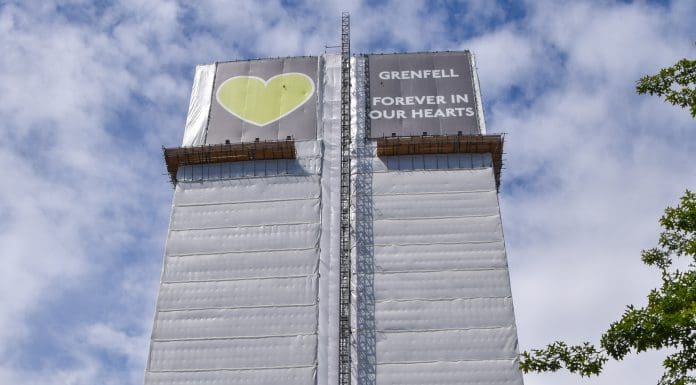The final report from the Grenfell Inquiry contains 1,700 pages documenting the failings that led to the 2017 fire, as well as recommendations for Government and industry
Seven years after the tragic fire that claimed the lives of 72 residents, the final report from the Grenfell inquiry has been released today.
The inquiry was chaired by Sir Martin Moore-Bick and includes recommendations from his panel colleagues such as architect Thouria Istephan and housing expert Ali Akbor.
Survivors and those bereaved by the fire were granted early access to the findings of the £200m inquiry yesterday.
Sir Moore-Bick said that the length of the inquiry was due to investigations uncovering “uncovered many more matters of concern than we had originally expected”.
Key findings from the report
The final report from the Grenfell inquiry found that responsibility for the fire fell between various parties, including:
Architects Studio E, the builders Rydon and Harley Facades who took an “unacceptably casual” approach to building regulations. Harley Facades, who installed the flammable cladding system, assumed others would check the materials were appropriate. Studio E did not perform the work of a “reasonably competent architect” in identifying the fire risks posed by the cladding.
The landlords, Kensington and Chelsea Tenant Management Organisation, who allowed their relationship with tenants to devolve into “personal antagonism” and demonstrated “a basic neglect of its obligations in relation to fire safety”
Kingspan, who made around 5% of the combustible foam insulation on the tower, who “knowingly created a false market in insulation for use on buildings over 18 metres in height”, which created the market conditions allowing fellow insulation company Celotex (who made the majority of the combustible foam insulation on Grenfell Tower) to break into the market by “dishonest means”
Sir Martin Moore-Bick said that “the simple truth is that the deaths that occurred were all avoidable, and those who lived in the tower were badly failed over a number of years and in a number of different ways, by those who were responsible for ensuring the safety of the building and its occupants.”
He continued: “Not all of them bear the same degree of responsibility for the eventual disaster. But as our report shows, all contributed to it in one way or another. In most cases, through incompetence, but in some cases, through dishonesty and greed.”
Systemic failings contributed to the disaster
Signs were evident as “early as 1991” that the cladding materials used posed a fire risk.
The Government was “well aware” of the risks posed by highly flammable cladding, said Moore-Bick, but failed to “give proper consideration at an early stage to the dangers of using combustible materials in the walls of high rise buildings, that including failing to amend, in an appropriate way, the statutory guidance on the construction of external walls. That is where the seeds of the disaster were sown.”
During the emergency, Kensington and Chelsea Council were criticised for not having “plans in place to enable it to respond effectively”, which it had failed to provide, as well as relevant training. This meant that those affected by the fire had to rely on local and community resources for food, shelter and clothing.
Key recommendations from the final Grenfell inquiry report:
A licensing scheme for contractors seeking to work on high-rise buildings
Creating a new construction regulator reporting directly to a cabinet minister
An urgent review of building regulation guidance on fire safety
Creating a national authority to administer building control functions, stripping town halls of that power
Statements are expected shortly from campaign group Grenfell United, the Grenfell Next of Kin group and the Fire Brigades Union.
“A stay-put policy is never appropriate” for high rise buildings
Former leader of the House of Commons Jacob Rees-Mogg was forced to apologise in 2019 after claiming that the victims who followed the stay-put policy did not have “common sense”. 55 of the 72 people who died in the fire were told to remain in their homes by fire services.
Frank Ferguson, head of the CPS Special Crime and Counter Terrorism Division confirmed that criminal prosecutions for those responsible would not take place until 2026 at least: “Our team of specialist prosecutors will then carefully review the file but do not expect to be in a position to make any charging decisions until the end of 2026.”
The post “Decades of failure…systematic dishonesty”: Final Grenfell Inquiry report released appeared first on Planning, Building & Construction Today.


